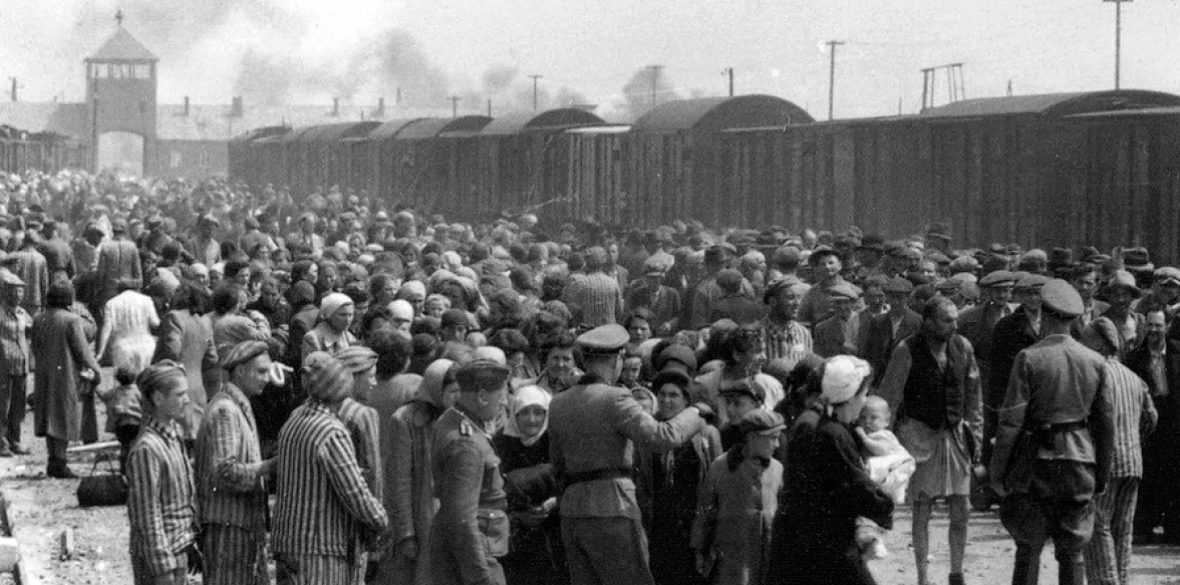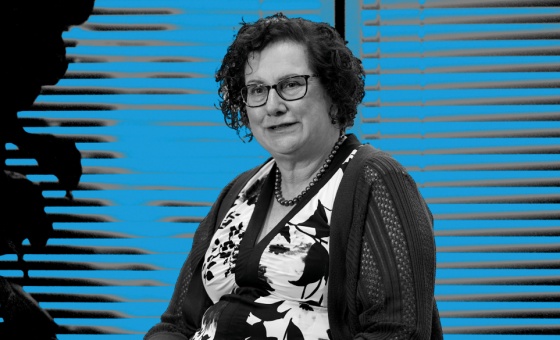This is the last article you can read this month
You can read more article this month
You can read more articles this month
Sorry your limit is up for this month
Reset on:
Please help support the Morning Star by subscribing here
ORDINARY PEOPLE is the theme and title chosen by the Holocaust Memorial Day Trust for the commemoration of HMD 2023.
In the trust’s words: “Genocide is facilitated by ordinary people. Ordinary people turn a blind eye, believe propaganda, join murderous regimes. And those who are persecuted, oppressed and murdered in genocide aren’t persecuted because of crimes they’ve committed — they are persecuted simply because they are ordinary people who belong to a particular group.”
But what this statement leaves out is the victims. These too were ordinary people — millions of them, including six million Jews.
Many of these “ordinary people” —the persecuted and their liberators — did extraordinary things in extraordinary circumstances.
Last year a remarkable book was published, The Escape Artist, by Jonathan Freedland. In it he recounts the story of an “ordinary” man, Rudolf Vrba (formerly known as Walter Rosenberg), a Slovakian Jew, imprisoned in Auschwitz who together with a fellow inmate, Alfred Wetzler, were the first Jews to escape from Auschwitz.
But this isn’t merely the story of a courageous, death-defying escape. It wasn’t just the getaway that was remarkable; it was the fact that Vrba stored every detail of the camp and the process of extermination — the Final Solution — in his prodigious memory, determined as he was to warn the Jews of Europe what fate awaited them.
From it came a 32-page report which was sent to Churchill, Roosevelt and the Pope — all of whom ignored it initially.
Vrba had been forced to work in a variety of roles in camp and so had acquired what Freedland calls an “unusually comprehensive expertise in Auschwitz” — how it functioned as “an economic hub” as well as a death factory.
Vrba had also worked on the ramp where most new arrivals were sent directly to their deaths in the gas ovens. Vrba, a highly numerate man who later became an organic chemist, systematically “collect[ed] the data of industrialised murder.”
He remembered the origins and approximate numbers of every transport that arrived at Auschwitz. What he realised, writes Freedland, is that streamlined mass murder depended on “one cardinal principle: that the people who came to Auschwitz did not know where they were going or for what purpose.”
This fact motivated the prime purpose of Vrba’s escape. It wasn’t just to secure his and Wetzler’s freedom from Nazi tyranny, it was to warn Jews of their true fate at the hands of their Nazi captors.
The tyranny and horror of Auschwitz is meticulously recounted in the report, based on Vrba and Wetzler’s contemporaneous account which, 10 days after the escape, was written as a somewhat dry, factual narrative as told to the Slovak Jewish Council.
It was first written in Slovak by Vrba and Wetzler in April 1944, and simultaneously translated into German by Oscar Krasniansky of the Slovakian Jewish Council.
It also contained sketches and information about the layout of the gas chambers. Its lack of rhetorical flourish and bare description was deliberate — if it was to achieve its purpose it had to be factually accurate and precise.
Deported Jews, hoodwinked by the Nazis, were told that they were to be resettled, they had no idea that the cattle trucks into which they were herded were transporting them to their deaths.
The dead can’t bear witness and so the truth was hidden — after all who could believe that such genocidal atrocity was possible?
Vrba and Wetzler had seen the mass annihilation with their own eyes — their testimony had to be dispassionate and factual if it was to be believed.
Above all, the purpose of the report was to warn the remaining Jews of Europe of their impending fate at the hands of the Nazis. These were Hungarian Jews who remained as the residual piece of the fascist final solution.
Even while still in Auschwitz, Vrba had heard rumours that the camp was being expanded to cope with the arrival of about a million Hungarian Jews, the last surviving major European Jewish community.
It was this fact alone which spurred Vrba and Wetzler’s escape. They had to warn the world and prevent the annihilation of these Hungarian Jews.
Their report, which although initially ignored by world leaders, was widely published. The publicity around the report, combined with the fact that a German defeat was likely, was instrumental in spurring the Pope and Roosevelt to put pressure on Admiral Nicholas Horthy, the fascist regent of Hungary, to stop the deportations.
Thousands of Hungarian Jews had already been sent to their deaths, but 200,000 Budapest Jews were saved. For this reason, and for his unparalleled testimony, Freedland considers that Rudolf Vrba’s name should stand alongside Primo Levi, Anne Frank and Oscar Schindler “in the first rank of stories that define the Shoah.”
The story of “the man who broke out of Auschwitz to warn the world” did not end in 1945. Freedland’s research led him to Vrba’s childhood Slovak sweetheart whose testimony before she died provided much information about life for Slovakian Jews before and during the Nazi occupation.
From this and from Vrba’s second wife and 40 years’ worth of letters, Freedland was able to reconstruct the means and manner of the escape from Auschwitz and the dreadful journey to freedom.
Freedland pulls no punches in recounting the cover-ups after the war by those (Jews included) who had attempted to save their own skins at the expense of others.
Vrba was shunned by many who found both his honesty and remarkable memory uncomfortable.
Unlike the Vrba-Wetzler report, Freedland’s book is not dry, although it is meticulously factual. Every aspect of the horror of Auschwitz is corroborated in detailed notes to every chapter.
In this sense, this book is not only a fascinating story of a man hidden from history, but it is also a work of scholarship. It ranks, in my opinion, as one of the most important books on the Shoah ever written.
The Red Army liberated Auschwitz on January 27 1945. Ordinary people were the liberators, the mass annihilation of ordinary Jews was the work of vicious fascist antisemites, but, thankfully, some extraordinary people survived to bear witness.









